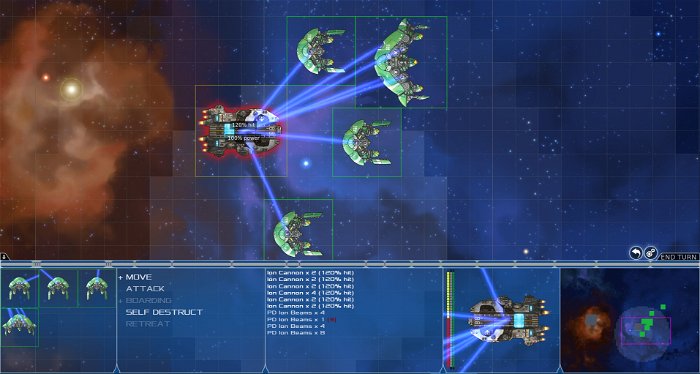Stars in Shadow is a new 4x turn-based strategy game that I’ve now spent a weekend with, and I think I might have a problem. Not because of any journalistic concerns, or even because of anything wrong with the game itself, per se. No, my problem is more of an “ants on my skin” variety. You see, I grew up mainlining Sid Meier’s Alpha Centauri. The fact that the installer for the game acronymed the executable for brevity to simply “SMAC” was always rather appropriate, given my level of commitment to it. The one solace I’ve been able to take in recent years is that no other 4x TBS has ever quite grabbed me the way that Alpha Centauri did. That is, until now…

Clearly, Stars in Shadow was inspired by that era of early Civ games, but has come bearing many gifts in the form of wonderful modern touches and an admittedly double-edged series of simplifications. Stars in Shadow begins with the usual fare: the player starts out with a single humble colony and a two units, one for exploration and one for colonization, so no surprises there. It’s a tried and true formula that works rather well, so no reason to change it. Though, the human faction starts with no colony and two colony ships, allowing a little more flexibility at the cost of a gamble on the first few rounds, given the limited number of hospitable planets in the early Stars in Shadow. The whole thing takes place in a randomly generated galaxy, but I wouldn’t be surprised to see hand-crafted scenario maps before long. In this regard, though, I’m reminded of Galactic Civilizations II and its system for colonies and outposts. Planets have different ratings for habitability and mineral resources, with the former deciding the number of structural improvements allowable on its surface. They’re still produced the way you’d expect from Civ or SMAC, but, again, planet quality is a limiting factor, as in GalCivII. It quickly starts to feel like the game cherry-picks all the best features and mechanics from other, more established IPs, then blends them with its own unique approach to art and aesthetic.
Speaking of which, the programming for Stars in Shadow is all done by a single person. The art, in turn, is created by just one more: Jim Francis, the creator of the webcomic Outsider. It feels a little indie / place-holder-y at first, but you know what? I like it. It fits with the developer’s vision of the game not being too cluttered of an experience. That experience, though? Huge. Way more than I would believe possible from what is essentially a one-man-show. The level of detail and number of player options are what really surprise me. All of my usual avenues for micromanagement in Alpha Centauri are catered to in Stars in Shadows, too, be it unit configuration, colony development, trade routes, etc. And, yet, it feels and plays like a much more streamlined game. There’s no analogue (or, at least, none I’ve yet seen) to the colonist morale / drone system, which speeds up colony management. Yet there’s just as much opportunity (and need) for expansion, given the overwhelming number of star systems that can be generated, each hosting a handful of planets ranging from barren to highly-colonizable.

The combat in Stars in Shadows feels like it takes inspiration from both f the Total War games and the Gratuitous series. There’s an auto-resolve feature, which seems to weigh the relative combat values of all involved vessels and decide a victor, but the real thrill lies in the player-controlled combat. It’s something you’ll be seeing a lot of, even as a diplomatic player, particularly due to the number of pirate factions that seem to inhabit any given galaxy.
Which brings me neatly to the point that Stars in Shadow is definitely still a game in development. There are clearly areas with room for improvement, such as the game’s desperate need for some form of pseudo fog-of-war, as there’s such an emphasis on scouting to discover viable routes of expansion, yet no at-a-glance method of keeping track of which stars have been explored. Ditto for explored systems with uninhabited-yet-viable planets. A system to manually mark these would be very welcome.
As it stands, though, Stars in Shadow is nonetheless a game that I’m very excited for. It feels like a game that can satisfy that craving for classic 4x titles, without (at least not as of yet) devolving into a state where turns take hours on account of micro. With five playable races on offer, and two more in the pipe, there’s enough variety to offer interesting strategic options for players, even if they’re not as nuanced as their counterparts in Sid Meier games. Certainly, I can’t fault a game that’s not even in Early Access as of my time with it for that. What we’re left with, then, is a very promising 4x game on the horizon. Now all the duo at Ashdar need to do is explore their possibilities, expand on their successes, exploit a gap in an unsatisfied genre, and exte… Perhaps just the first three Xs will do.




